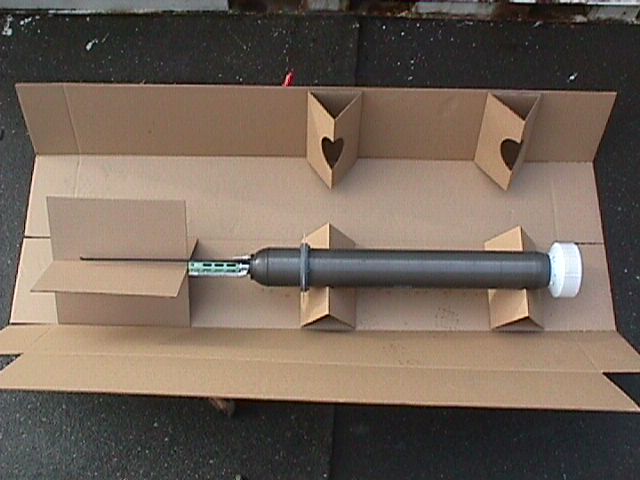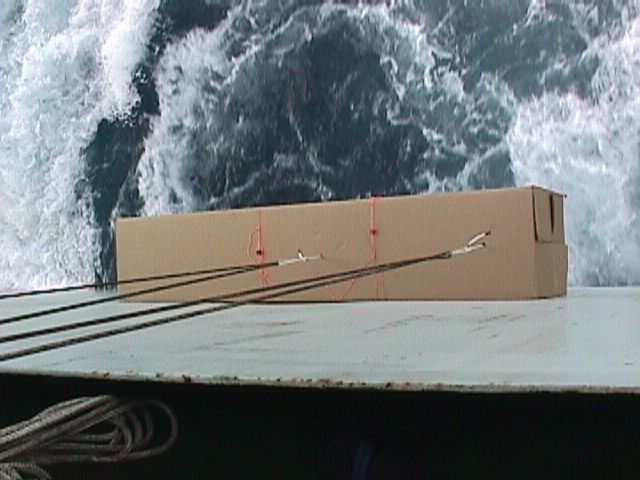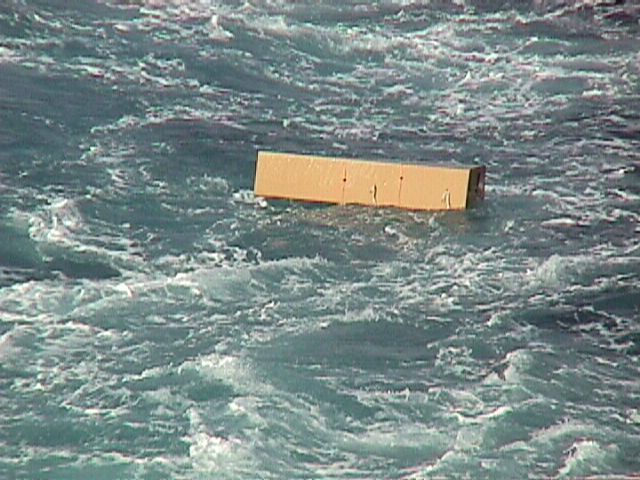
Most of our floats were deployed from very large commercial ships that happened to be steaming through geographic regions of interest. We have been graciously permitted to board these ships-of-opportunity during their regularly scheduled transits across the Atlantic. Deployments from these ships must be accomplished at full speed, which can be up to 27 knots (31 MPH) and from a deck that is 20 to 80 feet above the water.
To protect the float from being damaged during the deployment, we use a very strong, lightweight, 5-panel cardboard deployment vehicle as shown below. The deployment vehicle is designed to absorb much of the energy during impact and then automatically open and release the float. By using a 4-sided, 5-panel design, the package can be held closed with very little force, even during a relatively high impact collision with the sea surface. The vehicle is kept closed with lightweight cord and a water soluable link under a few ounces of tension. Once in the water, the soluable link dissolves, allowing the box to open and discharge the float. As an added safety measure, the cardboard is constructed using water soluable adhesive. All elements of the deployment vehicle are biodegradeable.

For ships with relatively small freeboard (less than 25 feet or so), the package is simply dropped from the rail with a horizontal orientation. For ships with more freeboard, the package is lowered to a safer height before being released. The photograph below was taken during a deployment from the stern of the TMM Morelos along a transit from Miami, Florida to Valencia, Spain. The free-board for this ship was 40 to 50 feet.

Several tests and trials of the VOS deployment vehicle were conducted in Seattle's Lake Washington before the technique was operational. The deployment vehicles appear to be quite effective at getting the instruments in the water undamaged. A total of 52 VOS deployments were executed between November, 1997 and February, 1999. All of the floats survived these deployments intact and functional.
